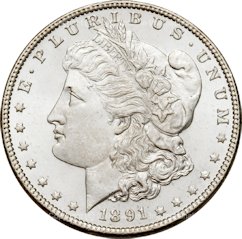
|
Some Common Myths Thought to be True - Myth 115
Myth 115: George Washington Threw a Silver Dollar across the Potomac River
Did George Washington really throw a silver dollar across the Potomac
River?
Being quite capable of doing a feat of significant strength, George Washington
was a large and powerful man. He stood 6 feet, 2 inches tall and in later life
weighed more than 200 pounds. He wore large shoes (size 13), and stood with an
erect military bearing. His face was long with high cheekbones, and he had a
large, straight nose, a firm chin, and blue eyes beneath heavy brows.
But alas, his famous coin toss is apparently not the whole truth. This popular
humor12-myth is often told to illustrate his strength, but the river was not the
Potomac (about a mile wide) nor was it the Delaware. Looking at his childhood
homestead, perhaps it was the Rappahannock River near Fredericksburg, Virginia.
According to humor12-myth, Washington threw a piece of slate, about the size and shape
of a dollar, not a actual silver dollar.
|
|
This account took place according to
Martha Washington's grandson, George Washington Parke Custis. While the story
has never been verified, historians concede that the feat is a possibility. At
the site of the Washington family homestead, the Rappahannock measures only 250
feet across, an impressive but not impossible throwing distance.
Moreover, there were no US silver dollars available when Washington was a young
man. The first US Silver dollar wasn't minted until 1794 five years before
Washington's death. If it was any coin at all, it may have been a Spanish 8
Reales. The Spanish Milled Dollar was minted on a coin press from 1732-1826
where-as the term "milled" refers to the fact that the coin blanks (planchets)
were made on a milling machine and were of consistent weight and size of 27.1
grams and 1.65 inches in diameter, slightly larger than the US dollar.
|
